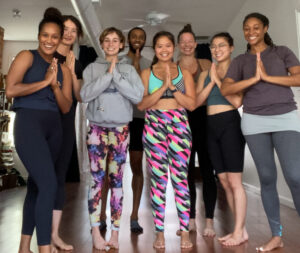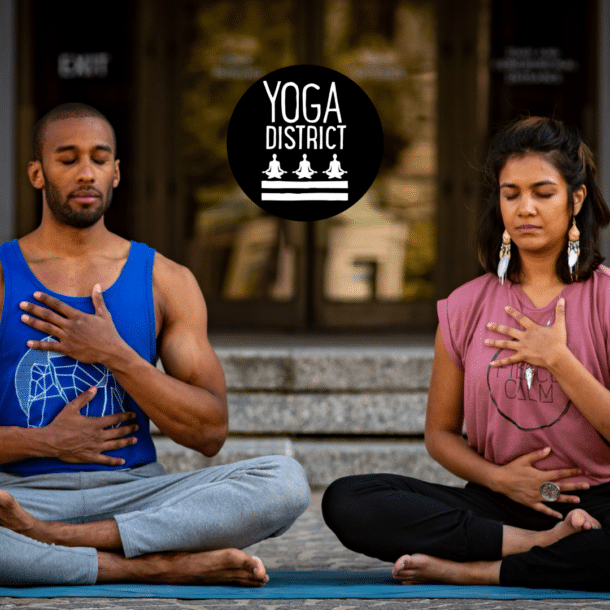I used to think of teaching yoga mainly in terms of sequencing together poses. But during my teacher training, I’ve come to appreciate that there’s other parts that are equally as important. A large part of my shift in perspective is driven by being able to practice different styles of yoga and study ethical concepts like inclusivity in the classroom.
Practicing Different Styles
So far in our training we’ve practiced Vinyasa Flow, Power, Dharma, Ashtanga, Restorative, Prenatal, and Chair Yoga (1, 2, 3). And each style has been taught by a teacher who specializes in it. As someone new to teaching yoga, having this exposure to different styles and teachers has been invaluable. It’s helped me broaden my perspective of what’s possible in terms of teaching.
While taking a class with Mana, I learned about the world of set sequences and gradual progression of postures that’s a part of the Ashtanga style. In Restorative I learned the benefit of staying in a posture, like Reclining Bound Angle Pose (Supta Baddha Konasana), for 5 to 10 minutes with the support of props to allow the muscles to safely soften into a deeper stretch (4). This relaxation benefits the parasympathetic nervous system. It aids our body to conserve energy to be used later and to regulate bodily functions like digestion and urination(5).
In our Chair Yoga class with Jasmine, I learned how to get into poses like Warrior 2 (Virabhadrasana II) and Cat-Cow (Chakravakasana) with the support of a chair (6, 7). Techniques that will be helpful if I have the opportunity to teach someone that may prefer not to have to get on and up from a yoga mat multiple times.
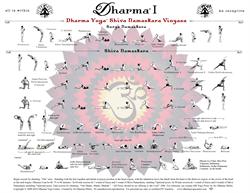 Dharma
Dharma
My teacher Emily instructed us through a class that included a sequence from the Dharma 1 Yoga Asana Chart. Per the Dharma style, after getting into certain postures we were given the time to find stillness in the posture. And Emily relied largely on demonstrating poses to assist us in refining our alignment. Hands-on assists are minimal in the Dharma tradition to avoid interfering with one’s natural ability to connect with the poses. However Emily’s refining cues made me feel supported in the various postures.
Energy After Class
What stood out to me about practicing Dharma was how calm I felt after the class. This highlighted to me how practicing various styles can have different energetic outcomes for the practitioner. And (although I can’t control the effect a class will have on a student) has made me more mindful about what the targeted energetic outcome will be for the classes I teach.
My Teaching Style
I’m leaning towards teaching a high-energy class that will probably align the most with the Vinyasa Flow style. But I haven’t committed to one particular yoga style just yet. More than likely it’ll be a style unique to who I am. And combine a little from each of the styles we’ve studied in training and techniques used by my teachers.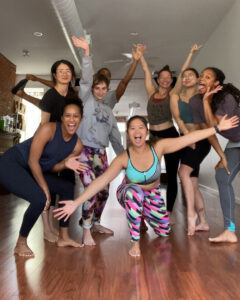
Inclusivity in the Classroom
The “Diversity, Accessibility, and Inclusivity” class taught by Mikela, also shaped my perspective on teaching. It was refreshing to have a blunt conversation about a range of topics such as the lack of diversity we’ve observed in the studio. How things like the geographical location of studio spaces and the media contribute to the problem. And also how as teachers we can make the studio a more inclusive space for all people.
Some of the tips our class came up with for creating an inclusive atmosphere are small things like:
- Welcoming students as they walk in the class
- Mentioning at the start of class that it’s okay to ask for assistance
- Giving students the opportunity to thank their neighbor for sharing space with one another
- In general, just being kind
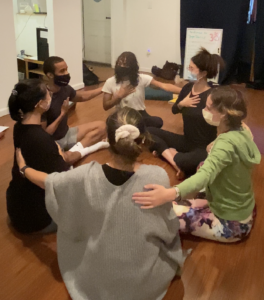 This conversation resonated with me. I’ve practiced yoga in-person at studios for about 4 years. And it took at least 2 years before I could walk into a studio, be able to acknowledge that not many (if any at all) people looked like me, and still feel comfortable to be myself. Part of what helped me get to that point has been simple things. Like when a teacher walked over and introduced themself at the start of class. Then asked if I have any injuries or conditions I wanted to share. These small actions alone let me feel welcomed and helped reassure me that I did in fact belong in the space.
This conversation resonated with me. I’ve practiced yoga in-person at studios for about 4 years. And it took at least 2 years before I could walk into a studio, be able to acknowledge that not many (if any at all) people looked like me, and still feel comfortable to be myself. Part of what helped me get to that point has been simple things. Like when a teacher walked over and introduced themself at the start of class. Then asked if I have any injuries or conditions I wanted to share. These small actions alone let me feel welcomed and helped reassure me that I did in fact belong in the space.
So as I make the shift towards instructing yoga classes myself, I’ll definitely be using the techniques we discussed in the class with Mikela. With the hope that everyone in the classes I teach feels included and comfortable to be themself.
What’s Next
A common misconception with yoga is that the physical asana practice is the main component of yoga. In reality, asana makes up only one of eight parts of yoga as it’s described in the Yoga Sutras of Patanjali. In the next post – I’ll share what these eight aspects are. And how our teachers have incorporated some of them into our Yoga Teacher Training.
Sources
- Vinyasa Flow, https://www.yogapedia.com/definition/5431/flow-yoga
- Power Yoga, https://www.yogapedia.com/definition/5030/power-yoga
- Chair Yoga, https://www.yogapedia.com/definition/10518/chair-yoga
- Reclining Bound Angle Pose (Supta Baddha Konasana), https://www.yogapedia.com/definition/7001/reclining-bound-angle-pose
- Neuroanatomy, Parasympathetic Nervous System, https://www.ncbi.nlm.nih.gov/books/NBK553141/
- Warrior 2 (Virabhadrasana II), https://www.yogapedia.com/definition/6093/warrior-two-pose
- Cat-Cow (Chakravasana), https://www.yogapedia.com/definition/7624/cat-cow-pose

